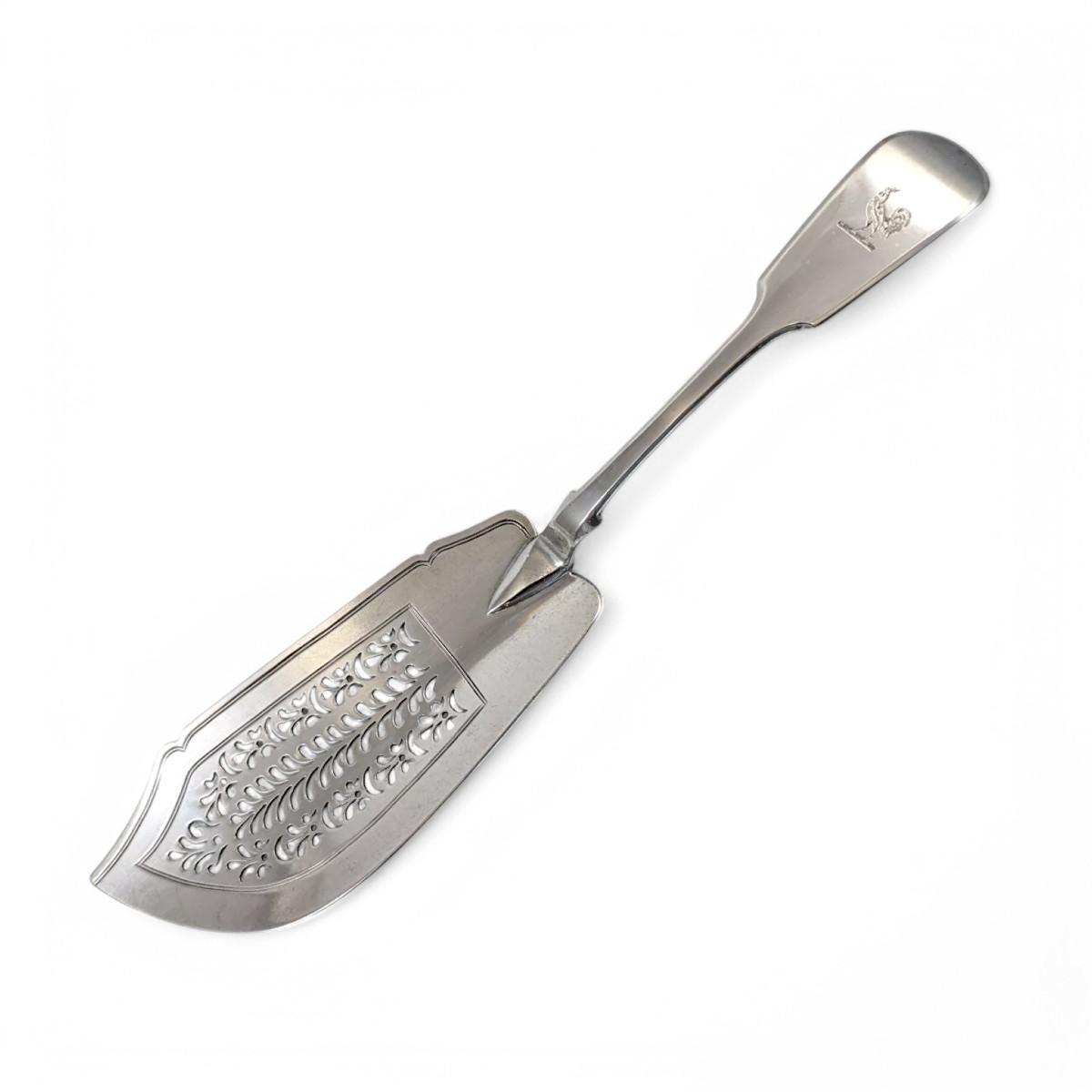The slice features a broad, asymmetrical scimitar-shaped blade with a finely pierced openwork panel, incorporating scrolling foliate and palmette motifs. This style of intricate hand-piercing, often referred to as "bright-cut filigree," was highly popular in Regency and early Victorian flatware, combining visual elegance with practical function by allowing juices to drain while serving fish.The blade is edged with a raised, stepped border, sharply defined and crisp. The handle is executed in the classic Fiddle Thread pattern, a refined Neoclassical design, embellished with a hand-engraved crest of a rooster – likely linked to a family coat of arms from Northumberland or Scotland.William Chawner II (1781–1834) was one of London's most important flatware makers of the period. His workshop set the standard for English spoon and fork production, and many of his forms remained influential throughout the Victorian era.Fully hallmarked for sterling silver, London assay office, 1830. Maker’s mark for William Chawner II clearly struck.A fine and practical example of Regency and William IV silver craftsmanship.Measurements:
Length: 31 cm
Width (blade at widest point): 6.6 cm
Weight: 158 g / 5.08 t ozCondition:
Excellent antique condition. No dents, splits, or signs of damage. Hallmarks clear and legible. Minor surface wear consistent with age and gentle use. The blade remains flat and the piercing crisp and detailed. Please refer to all photographs for a detailed view of condition and craftsmanship.Shipping & Packaging




























 Le Magazine de PROANTIC
Le Magazine de PROANTIC TRÉSORS Magazine
TRÉSORS Magazine Rivista Artiquariato
Rivista Artiquariato
